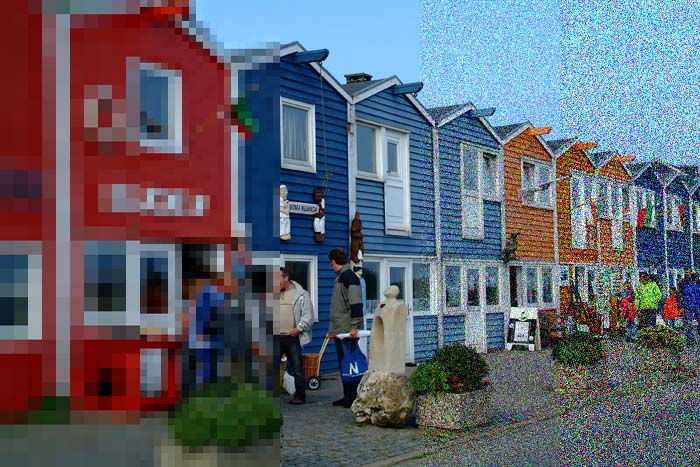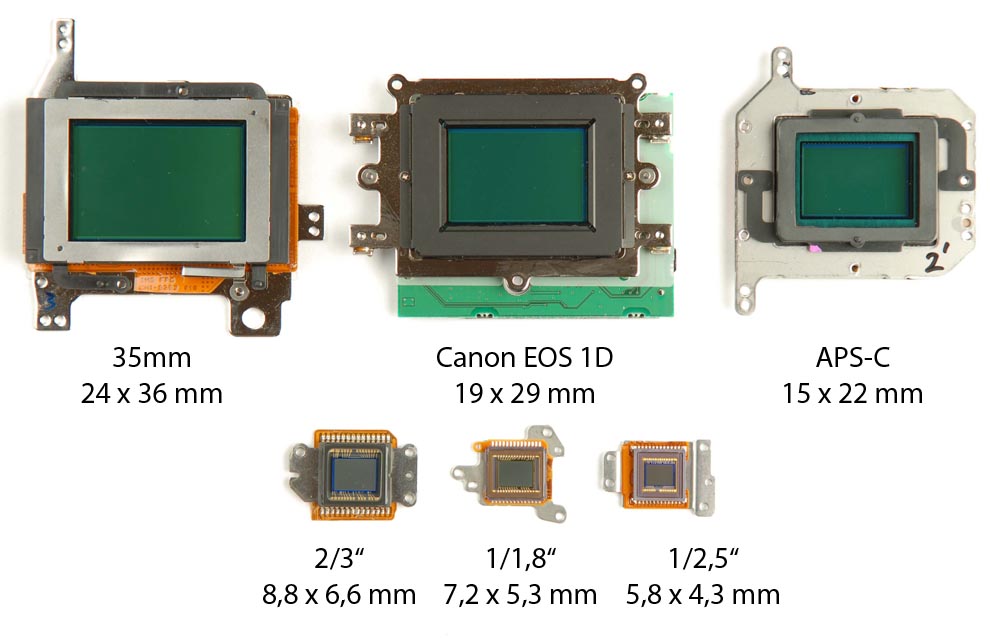6 Megapixel the best compromise between pixel count and sensitivity for Consumer cameras
2. July 2011The best compromise for a compact camera is a sensor with 6 million pixels or better a sensor with a pixel size of >3µm.
A digital camera with 12 million pixels is better than one with 6 million. ‘That is correct’ is what you would probably say because you’ve always heard more pixels are better.
It’s not true(!!!), we have to say when it comes to compact cameras. We, the staff of Image Engineering which is an independent testing laboratory that, amongst other things, tests digital camera for the German magazines Color Photo and c’t. Quite a while ago we noticed that the image quality of digital cameras was getting worse instead of better. The reason is that today’s sensors are divided into more and therefore smaller pixels. We want to clarify the consequences on this website.
The reason we bring this up is the vicious circle we are in and have to break out of. Most people have heard that a lot of pixels make a good camera hence they buy the cameras with the most pixels. Thus, manufacturers produce cameras with more and more pixels so that they will sell better. But this does not improve the quality of the pictures.
This website is our little contribution for clarification and will hopefully get noticed by the public and the manufacturers.
 6 megapixels- the best compromise between number of pixels and image noise. As shown here: the increase of details with more pixels and the increase of errors if the pixels become too small.
6 megapixels- the best compromise between number of pixels and image noise. As shown here: the increase of details with more pixels and the increase of errors if the pixels become too small.
1995- In this year the first digital cameras were introduced to the market (Casio QV-10, Kodak DC 40, etc.). These cameras had a small number of pixels and provided pictures that weren’t visually acceptable in a printed form. The photography press criticized the small number of pixels and the manufacturers reacted with appropriate cameras. In 1996, there were already cameras with 800,000 pixels and in 1998; the base line was 2 mega pixels.
This amount was enough to print a 10 x 15 cm picture in high quality and the A4 print (21 x 29.7 cm) was satisfactory. At that time it was true: “The more pixels, the better the picture.” The number of pixels was the bottle neck for quality. Everybody had heard of this and it has been imbedded in people’s minds.
Time went by and at the Photokina in 2004, 6 megapixels for digital cameras were introduced. Experts agree that a photo with 6 megapixels can hold up to an average picture on 35mm film under typical exposure conditions. Unfortunately the quality of pictures has consistently decreased since then.
The 8 megapixels devices released in 2005 showed extreme picture errors (so-called noise) under low light conditions and colour fringes in high contrast structures became visible. These problems have become even worse in today’s cameras with 10 and 12 megapixels. Manufacturers have attempted to repair these problems with software for noise suppression and picture editing. Success is limited as can be seen by reviewing the sample images on this site and that’s why today this is true:
“The more pixels, the worse the image!”
But why? Well, compact cameras are supposed to be small and reasonably priced. Therefore small image sensors, e.g. format 7.5 x 9.4 mm or 5.4 x 6.8 mm, are built into the cameras. To increase the pixel count, the sensor has to be divided into smaller and smaller pixels.


The result is a decrease in sensitivity of the camera and an increase in noise because the amount of light collected by a single pixel is smaller. At the same time, increasing the number of pixels is supposed to lead to more details (resolution), but in order to achieve that better lenses with high resolution and a lower lateral chromatic abberation are needed. However better lenses are bigger and don’t fulfill the requirements for ‘small’ cameras any more.
In the meantime, the pixels have become so small that the physical phenomenon of diffraction causes a loss of details with smaller apertures (with pixels below 2 microns already from f-stop 3.5). In addition, the data sizes of uncompressed images from cameras with 12 megapixels are approx. 36 MB/ picture. This data flood results in long editing times and requires huge storage capacities. So actually, what is critical for the listed problems isn’t the number of pixels but the size of each one. But in order to make pixels bigger, the sensor must be enlarged and along with that the camera with the lens gets bigger. That defeats the point of how big a ‘compact’ camera should be for consumers.
Digital SLRs with many pixels are okay.
Digital single lens reflection cameras (SLRs) basically show the same behaviour but the sensor of those cameras and the single pixel is much bigger. Therefore, the cameras have higher sensitivities and show less noise. The high quality lenses provide the necessary resolution and the cameras are designed for high pixel counts.
The best compromise for a compact camera is a sensor with 6 million pixels or better the size of a pixel with >3µm .
Below you can find a comparison of sensor sizes. We calculated how many pixels have space to be in a sensor if one pixel has a size of 3 µm which we believe to be a minimum size for good image quality at higher sensitivity levels (>ISO 400).
|
Sensor size |
Number of pixels [Megapixels] |
Sensor size |
Number of pixels [Megapixels] |
|---|---|---|---|
|
35 mm |
96 MP |
2/3″ |
6 MP |
|
APS-C |
37 MP |
1/1,8″” |
4 MP |
|
4/3″ |
27 MP |
1/2,5″” |
2,7 MP |
Number of pixels calculated for a 3µm pixel size
Here are the pictures of real sensors:

